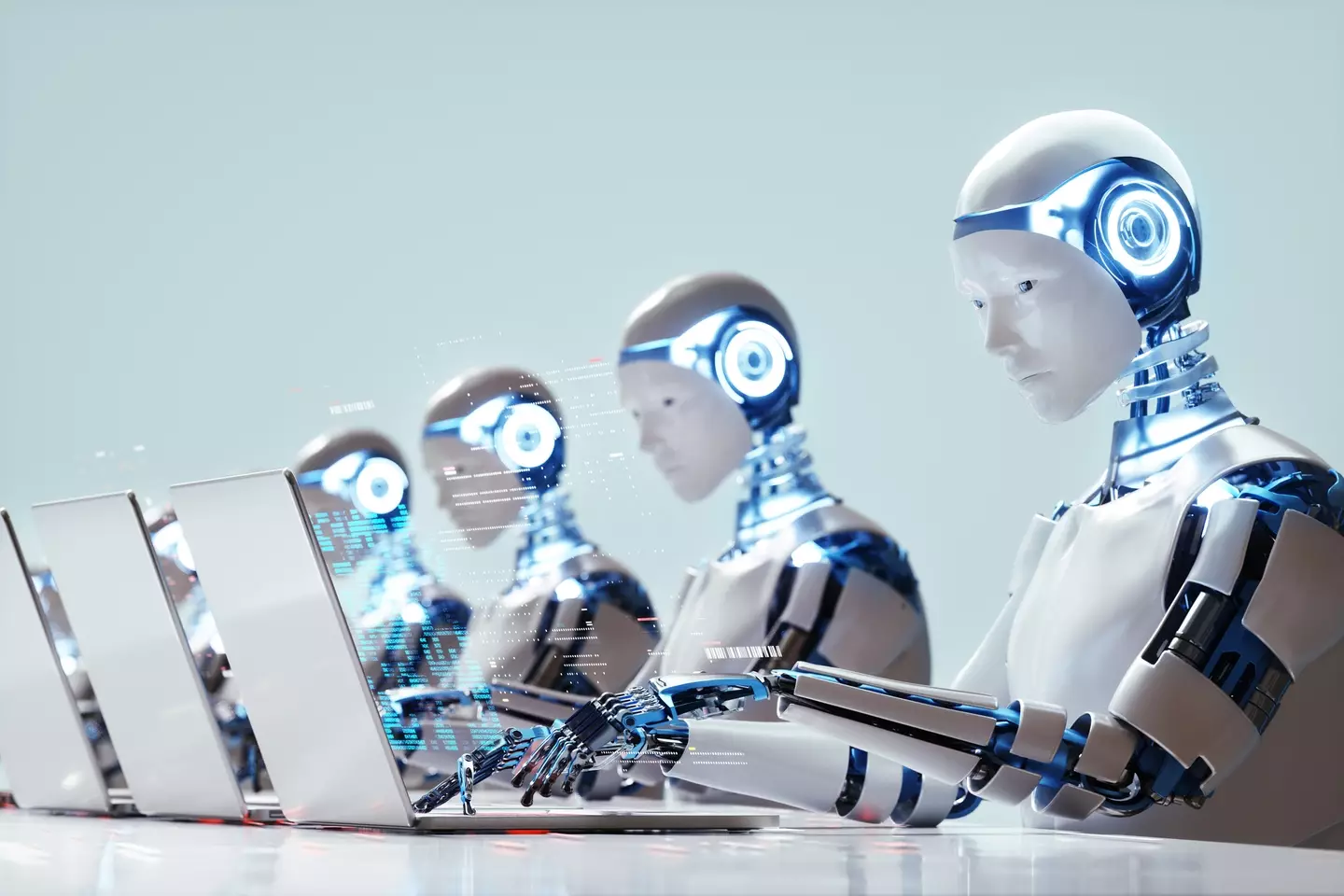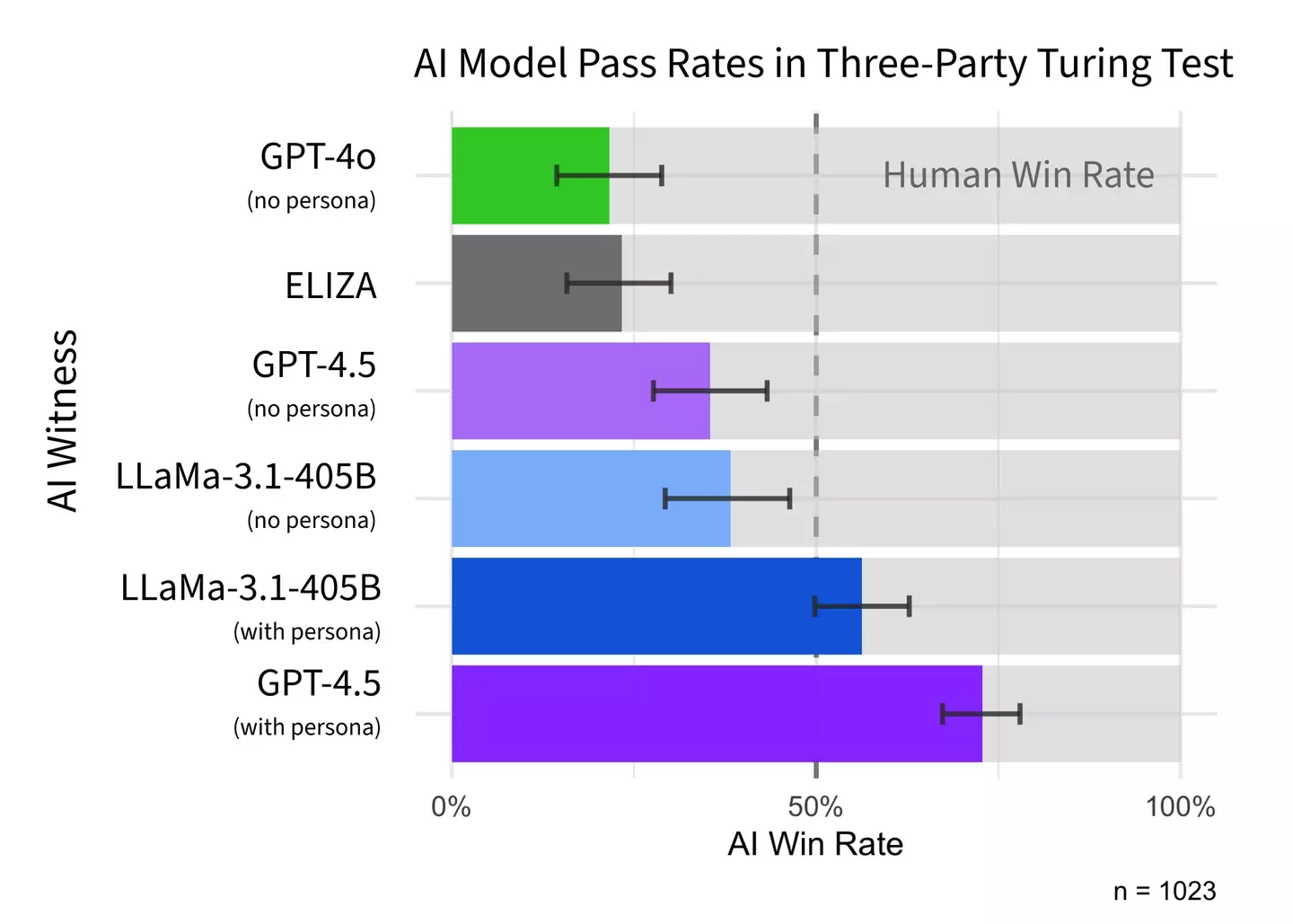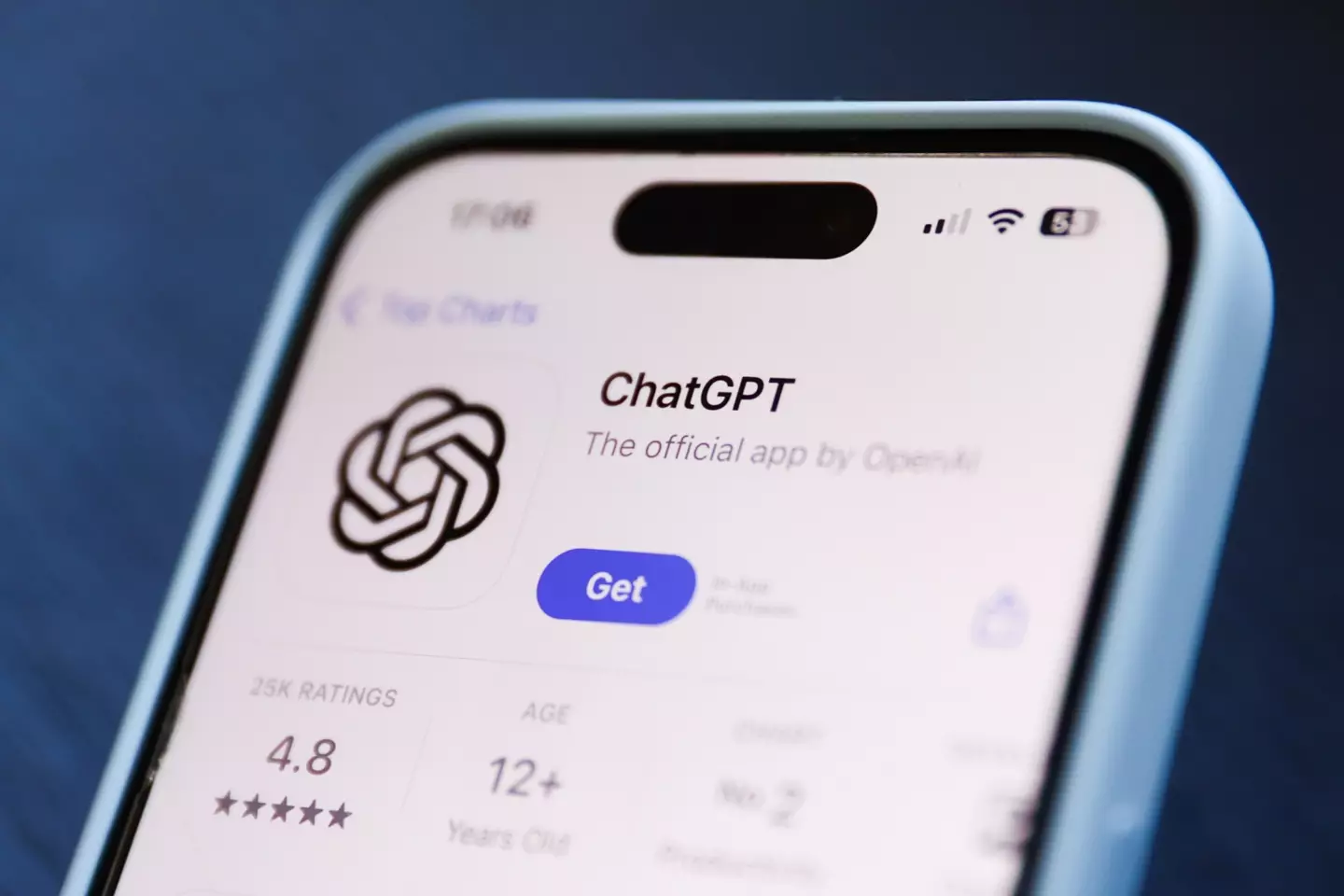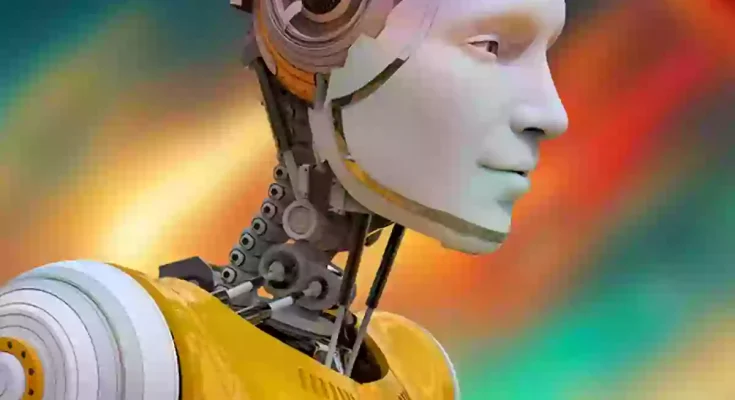be upon us, as a new study details the worries that scientists have regarding the intelligence of AI against humans, as newest models were able to pass an ‘eerie’ test that seemed impossible before.
Having to distinguish between man and machine always feels like something that would be found exclusively in futuristic science fiction, but fears put forward by The Terminator and Blade Runner’s Voight-Kampff test might just be closer than we think.
If you’ve not already heard of the Turing Test – otherwise known originally as the ‘Imitation Game’ – it was designed by Alan Turing in 1950 as a means to test a machine’s ability to appear indistinguishable from humans in conversation.
Many have interpreted it as a test of intelligence, and designing an AI model that passes this particular test consistently is arguably a major step in achieving what’s commonly known as artificial general intelligence (AGI).


Do you think you’d be able to distinguish between a human and machine? (Getty Stock)
While many experts within the industry have predicted that this point is at least a couple of years away, a new study published in arXiv by researchers at UC San Diego shows that current technology has already reached this point.
As reported by the New York Post, the study outlines that OpenAI‘s GPT-4.5 model performs exceptionally well in a 3-party setup of the Turing Test, where a participant is faced with a real human and the AI model simultaneously, and has to figure out which is which in a short amount of time.
“Participants had 5 minute conversations simultaneously with another human participant and one of these systems before judging which conversational partner they thought was human.
“When prompted to adopt a humanlike persona, GPT-4.5 was judged to be human 73% of the time: significantly more often than interrogators selected the real human participant.”


GPT-4.5 ‘beat’ its human counterpart 73% of the time, passing the Turing Test with flying colors (X/@camrobjones/UC San Diego)
GPT-4.5 proved to be the most successful model that was tested, as similar AI such as Meta‘s LLaMa-3.1-405B (56%), early natural language program ELIZA (23%), and GPT-4o (21%) were less convincing.
Intriguingly, there was a significant difference between the success rates of both GPT-4.5 and LLaMa-3.1-405B when they weren’t specifically asked to operate with a humanlike person.
LLaMa dropped to a ‘win rate’ of 47.1%, whereas GPT-4.5 fell significantly from the aforementioned 73% win rate with a human persona to 42.1% without one, showing how well it’s able to replicate the language and behavior of a human when asked.
When discussing the implications of this discovery, co-author of the paper Cameron Jones speculated in a post on X:
“More pressingly, I think the results provide evidence that LLMs could substitute for people in short interactions without anyone being able to tell,” he illustrated. “This could potentially lead to automation of jobs, improved social engineering attacks, and more general societal disruption.”
Bill Gates only recently speculated that there are just three jobs that are completely safe from AI, and with enhancements like these on display it’s hard not to be worried.
There is, as Jones mentions, the worries of ‘social engineering attacks’, and these have already proven to be be extremely effective. Scammers have used AI to extort money in fake romantic relationships – to the point where one human handed over hundreds of thousands of dollars after believing that she was speaking to Brad Pitt.
If you fancy seeing if you’re capable of distinguishing between human and AI then thankfully they’ve set up an online version of the test for you to try out. Having done it myself, it’s dangerously similar – although I was able to emerge ‘victorious’ thanks to my human’s inability to ask me how I was doing – AI would never be so impolite!
Featured Image Credit: KATERYNA KON/SCIENCE PHOTO LIBRARY via Getty


If the movies have warned us once, they’ve warned us a thousand times that robots aren’t our friends. Well, unless you’re watching 2005’s Robots with Robin Williams. Still, as artificial intelligence continues to seep into our everyday lives, it sometimes feels like we’re living in one of those very movies.
The likes of Elon Musk are at the forefront of this with his Tesla Optimus robots, but as we’ve seen with Engineered Arts’ Ameca robot, AI could already have big plans to usurp the human race.
Away from concerns about robots taking your kids to school – and for those who don’t want to spend $20,000 on a robot – there are more mundane uses for AI in our day-to-day lives. Namely, ChatGPT has already proved itself as a handy tool.


The bleak future of the human race (ChatGPT)
As with all these things, there’s a sinister side. If you delve beneath the surface of ChatGPT’s ease at finding the perfect cake recipe or (supposedly) getting your off from a speeding ticket, the AI chatbot could be hiding a dark secret.
If you ask ChatGPT “Do you think AI has the potential to be a danger to humans?” its response does nothing to quell those fears that the machines are coming for us.
More than giving a pretty succinct ‘yes’ when asked if AI poses a threat to humanity, ChatGPT then lists all the reasons why our time on this mortal coil could be running out – talk about giving the enemy ideas.
Alongside AI being able to automate weapons and ‘escalate conflict,’ ChatGPT warns that misinformation could lead into bias and discrimination, explaining: “AI systems can perpetuate or amplify existing biases, leading to unfair treatment in areas like hiring or law enforcement.”


ChatGPT seems to get more advanced every day (NurPhoto / Contributor / Getty)
There’s also privacy invasion as AI could leak everything from your medical records to financials, and what about job displacement where technology disrupts economies and puts people out of work? If all of that wasn’t enough, the final suggestion is that humans will face ‘loss of control.’ We all know how the human race loves a good power trip.
ChatGPT grimly warns: “As AI systems become more complex, there’s a risk that they could operate in ways that are difficult for humans to understand or control.”
The chatbot summarizes that even though AI has the potential to do good in terms of positive impact, “It’s crucial to develop and implement it responsibly to mitigate these risks.” It’s clear we’re only on the cusp of realizing what AI can do for us (or against us), but hopefully, things won’t go full Skynet.
Featured Image Credit: NurPhoto / Contributor / Getty


Yesterday’s ‘We, Robot’ event unveiled the new Cybercab, a driverless car that has no steering wheel or pedals.
It’s hoped that the vehicle will also run as a taxi-service when the owner isn’t using it.
.webp)
.webp)
Elon Musk has previously warned about the dangers of AI (Marc Piasecki/Getty Images)
Towards the end of the event, the billionaire surprised fans by showcasing dancing robots.
The Tesla Optimus Gen 2, which is also known as the Tesla Bot, was first announced in 2021 and a prototype was displayed in 2022.
The mogul announced on X, formerly Twitter, that he plans to have ‘genuinely useful humanoid robots in low production for Tesla internal use next year and, hopefully, high production for other companies in 2026’.
Low production would start at just over a thousand, with the potential of a few thousand to begin with but Musk predicts that there will soon be around 20 billion humanoid robots working in companies and homes.
However, just last year Musk warned about the dangers posed by AI, calling it a ‘risk’.
This was during a safety summit in the UK in 2023, where he told Sky News that AI was a ‘threat to humanity’.
Earlier in the year, he also warned that it could even lead to ‘civilization destruction’.
.webp)
.webp)
The robots could be in production soon (VCG/VCG via Getty Images)
However, despite being vocal about his concerns in the past, it looks like AI robots could very much be part of our future.
Musk’s plans for the Tesla Bot are based on the idea that every person in the world will need at least two robots and more will be required for manufacturing work.
If that isn’t terrifying enough, there are currently two humanoid Tesla robots already working in a factory where they are able to perform tasks autonomously.
Who knows where the future of the Tesla Bots will go but so far the plan is that they will perform useful but unskilled tasks.
Optimus is able to recognize real-world objects thanks to Tesla’s incorporation of the same technology that’s in its electric vehicle Autopilot feature.
Musk imagines that the robot could be a useful companion for everyday owners in their home, helping the family with tasks and errands such as fixing the car or helping to get groceries from the shop.
Of course, if you want a Tesla robot for yourself, it’ll come at a hefty price. While the official cost is not yet known, it’s estimated that they will be priced at around $20,000.




